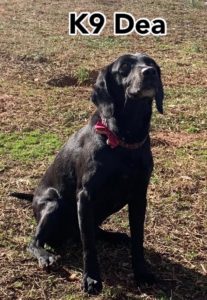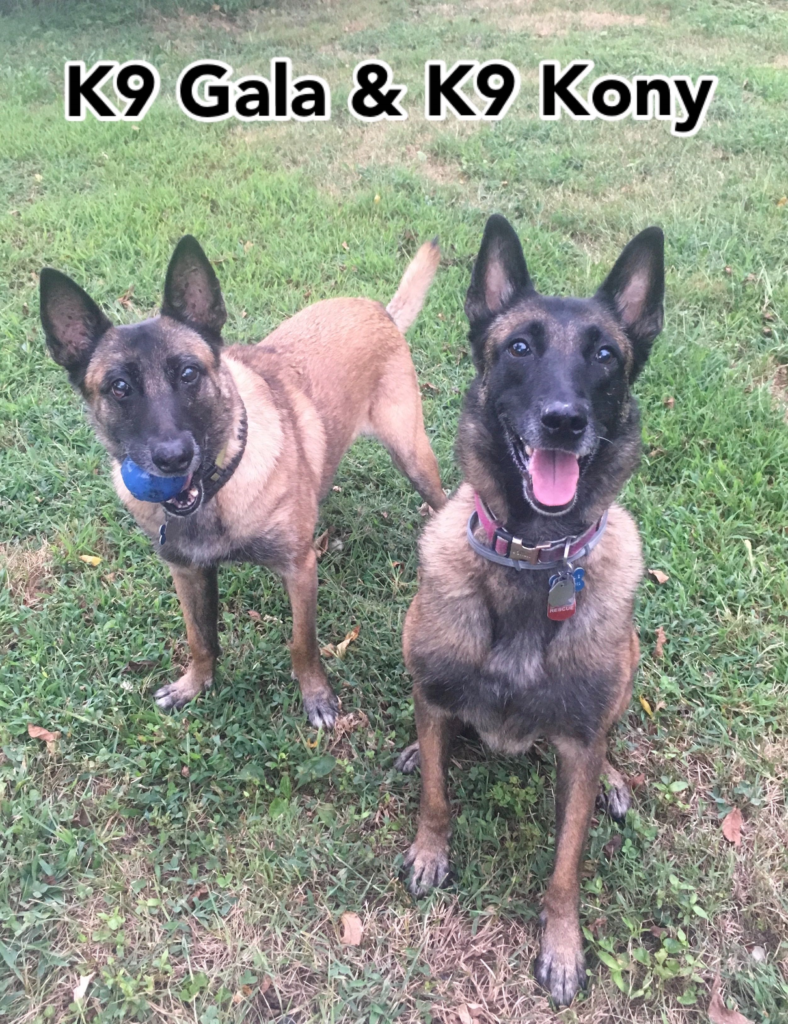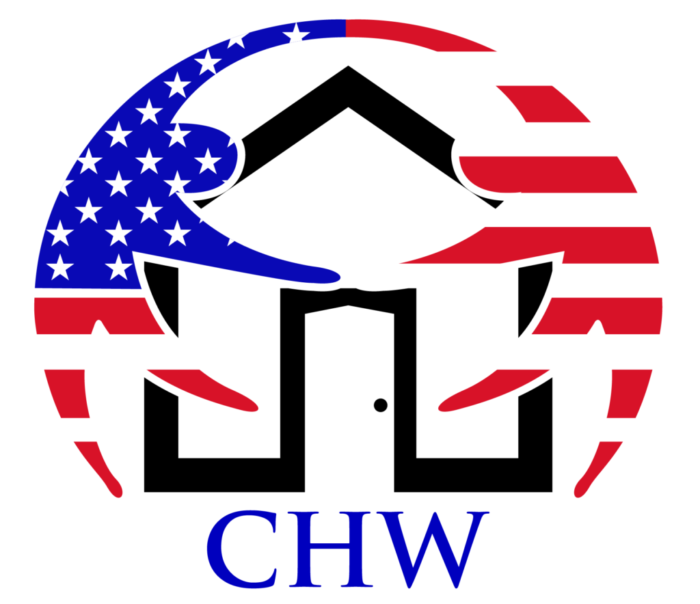 Based at the foothills of the Blue Ridge Mountains in Nelson County, one will find a small kennel owned by Amy Swope, a veteran of the Army National Guard. After 8 years in the National Guard, Amy decided to continue her journey of service with 8 years as a contracted K9 Handler and trainer for contract working dogs (CWD) used for detecting explosives. During her time both stateside and abroad, Amy was tasked with selecting “green dogs” based on their genetics such as high drive and having a “one track mind’ which gave the dogs the focus to stay on task during high pressured situations. Once these dogs were polished and ready for duty, they were deployed to the Department of Defense for assignment.
Based at the foothills of the Blue Ridge Mountains in Nelson County, one will find a small kennel owned by Amy Swope, a veteran of the Army National Guard. After 8 years in the National Guard, Amy decided to continue her journey of service with 8 years as a contracted K9 Handler and trainer for contract working dogs (CWD) used for detecting explosives. During her time both stateside and abroad, Amy was tasked with selecting “green dogs” based on their genetics such as high drive and having a “one track mind’ which gave the dogs the focus to stay on task during high pressured situations. Once these dogs were polished and ready for duty, they were deployed to the Department of Defense for assignment.So what happens once these dogs are no longer in service?
Well, programs such as those at Langley, take care of the dogs from birth to retirement, however CWD retirement process can get a bit complicated. Most of the CWD don’t have a way home and are often in need of organizations such as Mission K9 Rescue or US War Dogs to step in. Amy transitioned her expertise to assisting one of these organizations in transporting some of the dogs stateside and rehabilitating them for civilian life.
This is often not an easy task as many of these dogs suffer from similar symptoms to PTSD.
 Working under intense pressure in combat zones along with the expectations to keep our service members safe can create a stressful environment for the CWDs. Amy uses what she calls Successive Approximation which is essentially little by little or baby steps. Up to this point all the dog has known is the handler, the kennel and the mission. Most of these dogs suffer from kennel stress and often have difficulty settling down. They can be extremely restless causing a sense of “high alert”. Majority of these dogs spend their time circling within their kennel so once inside a home you may see the same behavior throughout the house.
Working under intense pressure in combat zones along with the expectations to keep our service members safe can create a stressful environment for the CWDs. Amy uses what she calls Successive Approximation which is essentially little by little or baby steps. Up to this point all the dog has known is the handler, the kennel and the mission. Most of these dogs suffer from kennel stress and often have difficulty settling down. They can be extremely restless causing a sense of “high alert”. Majority of these dogs spend their time circling within their kennel so once inside a home you may see the same behavior throughout the house.Another symptom that is common with CWDs is separation anxiety. The bond with the dog’s handler while on mission is all the dog understands so transitioning to a new place with the expectation of being alone for longer periods of time can cause a sense of insecurity. Amy will utilize a crate with short time intervals at routine times of the day to begin the steps in helping the dog to create a level of self- soothing. For example: The dog will learn the crate time is for 10 minutes at 7 am. After several days the time can increase to 15 minutes and so on. This will help the dog to transition to a routine and understanding the handler will return.
This is just one example of the steps on a long list that can be part of the rehabilitation process. These dogs are not used to fluffy dog beds, couches, toys, dog parks or Petsmart. It is a full-time job and requires dedication and involvement with proper training, therefore, adoption or fostering is definitely not for everyone.
So you may ask then what can I do if I don’t have the time or training to help with a CWD?

If you are not in the position to adopt or foster, there are fantastic organizations that are dedicated to helping our retiring canines. Advocating, volunteering or donating can support organizations to continue the mission to bring our four-legged warriors home.
If you are interested in helping, please check out the organizations listed below.
Cindy


